The following is taken from "Mental Illness in the 19th Century" by Carrie Hughes.
As you can see, many of the "Probable Causes of Mental Disorder" are ones which would apply only to Women and not to Men:
Asylum Records, a List of Probable Causes, Apparent or Assigned, for Mental Disorder, 1882:
MORAL:
Anxiety for Family
Death of Husband
Domestic Troubles
Excitement after Imprisonment
Fright
Fright from Assault
Over-Study
Over-Taxed Brain
Over-Work
Religious Excitement
Reversal of Circumstances
Worry
PHYSICAL:
Amenorrhoea
Brain Disease
Change of Life
Climate of India
Congenital
Epilepsy
Hereditary
Hyperlactation (= too much breast milk!)
Injury to Head
Intemperance
Masturbation
Old Age
Paralysis
Predisposition
Premature Labor
Puerperal State
Rheumatic Fever
Scarlet Fever
Sun-stroke
Unknown
The history of the treatment (or lack there of) of the mentally ill in the United States is a checkered one.
The first colonists blamed mental illness on witchcraft and demonic possession, and the mentally ill were often imprisoned, sent to alms houses, or remained untreated at home. Conditions in these prisons were appalling. In 1841, Dorothea Dix volunteered to teach a Sunday-school class for women prisoners; she was outraged by the conditions she witnessed. Dix went on to become a renowned advocate for the mentally ill, urging more humane treatment-based care than that given to the mentally ill in prisons. In 1847 she urged the Illinois legislature to provide “appropriate care and support for the curable and incurable indigent insane.” In 1851, Jacksonville Insane Asylum, where Elizabeth Packard was later confined, was opened.
Beginning in the late eighteenth century “moral treatment” had become the prevalent school of treatment in the United States. Replacing the model of demonic possession, “moral treatment” hypothesized that insanity was caused by brain damage from outward influences on the soft and fragile brain. Removing patients to an appropriate environment where they could indulge in clean, healthy living, and would be offered exercise, work, education and religious instruction, was thought to facilitate their cure.
But the “moral treatment” method was riddled with problems. As doctors and other hospital personnel grew frustrated by their lack of progress and a shortage of willing qualified staff, conditions often deteriorated. Faced with overcrowded hospitals, and concerned about the rise of the spiritualist movement (which some attributed to the “moral treatment” method), many superintendents resorted to physical restraints. By the middle part of the century, heredity also was considered a root cause of mental illness. Many in the field believed that weak family and vices, like alcoholism and masturbation, could lead to madness. The mentally ill were considered “genetically inferior” and eugenics and warped interpretations of Darwin’s theories suggested that mental illness could be eliminated through social engineering.
By the 1880s the tide was turning against asylums, thanks to stories of their poor conditions, some true, some sensational, appearing in the press. Greater oversight and medical standards for asylums were implemented. New theories promoted by neurologists included “rest cures” and treatment using static electricity. By the close of the century, Freud’s theories began to arrive in America, precipitating a revolution in psychiatry.
As you can see, many of the "Probable Causes of Mental Disorder" are ones which would apply only to Women and not to Men:
Asylum Records, a List of Probable Causes, Apparent or Assigned, for Mental Disorder, 1882:
MORAL:
Anxiety for Family
Death of Husband
Domestic Troubles
Excitement after Imprisonment
Fright
Fright from Assault
Over-Study
Over-Taxed Brain
Over-Work
Religious Excitement
Reversal of Circumstances
Worry
PHYSICAL:
Amenorrhoea
Brain Disease
Change of Life
Climate of India
Congenital
Epilepsy
Hereditary
Hyperlactation (= too much breast milk!)
Injury to Head
Intemperance
Masturbation
Old Age
Paralysis
Predisposition
Premature Labor
Puerperal State
Rheumatic Fever
Scarlet Fever
Sun-stroke
Unknown
The history of the treatment (or lack there of) of the mentally ill in the United States is a checkered one.
The first colonists blamed mental illness on witchcraft and demonic possession, and the mentally ill were often imprisoned, sent to alms houses, or remained untreated at home. Conditions in these prisons were appalling. In 1841, Dorothea Dix volunteered to teach a Sunday-school class for women prisoners; she was outraged by the conditions she witnessed. Dix went on to become a renowned advocate for the mentally ill, urging more humane treatment-based care than that given to the mentally ill in prisons. In 1847 she urged the Illinois legislature to provide “appropriate care and support for the curable and incurable indigent insane.” In 1851, Jacksonville Insane Asylum, where Elizabeth Packard was later confined, was opened.
Beginning in the late eighteenth century “moral treatment” had become the prevalent school of treatment in the United States. Replacing the model of demonic possession, “moral treatment” hypothesized that insanity was caused by brain damage from outward influences on the soft and fragile brain. Removing patients to an appropriate environment where they could indulge in clean, healthy living, and would be offered exercise, work, education and religious instruction, was thought to facilitate their cure.
But the “moral treatment” method was riddled with problems. As doctors and other hospital personnel grew frustrated by their lack of progress and a shortage of willing qualified staff, conditions often deteriorated. Faced with overcrowded hospitals, and concerned about the rise of the spiritualist movement (which some attributed to the “moral treatment” method), many superintendents resorted to physical restraints. By the middle part of the century, heredity also was considered a root cause of mental illness. Many in the field believed that weak family and vices, like alcoholism and masturbation, could lead to madness. The mentally ill were considered “genetically inferior” and eugenics and warped interpretations of Darwin’s theories suggested that mental illness could be eliminated through social engineering.
By the 1880s the tide was turning against asylums, thanks to stories of their poor conditions, some true, some sensational, appearing in the press. Greater oversight and medical standards for asylums were implemented. New theories promoted by neurologists included “rest cures” and treatment using static electricity. By the close of the century, Freud’s theories began to arrive in America, precipitating a revolution in psychiatry.

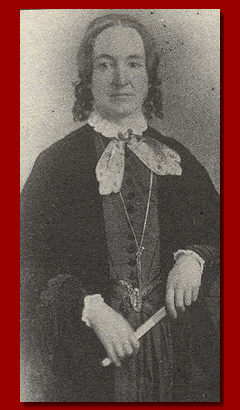




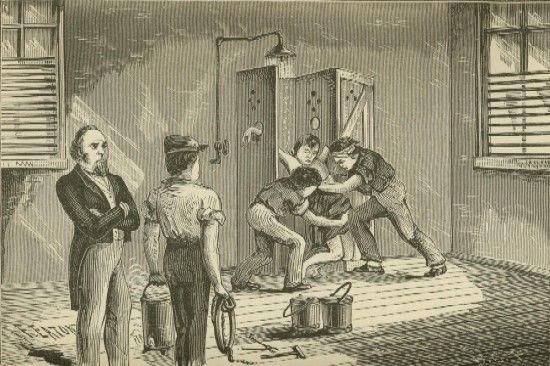
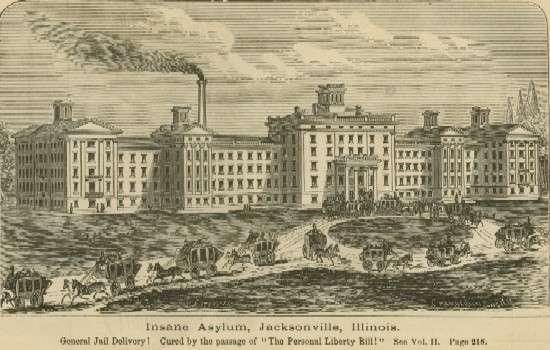
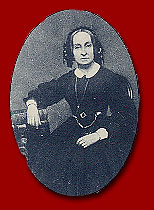
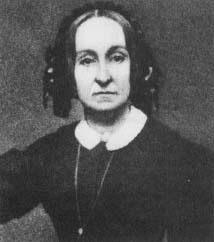
Comment